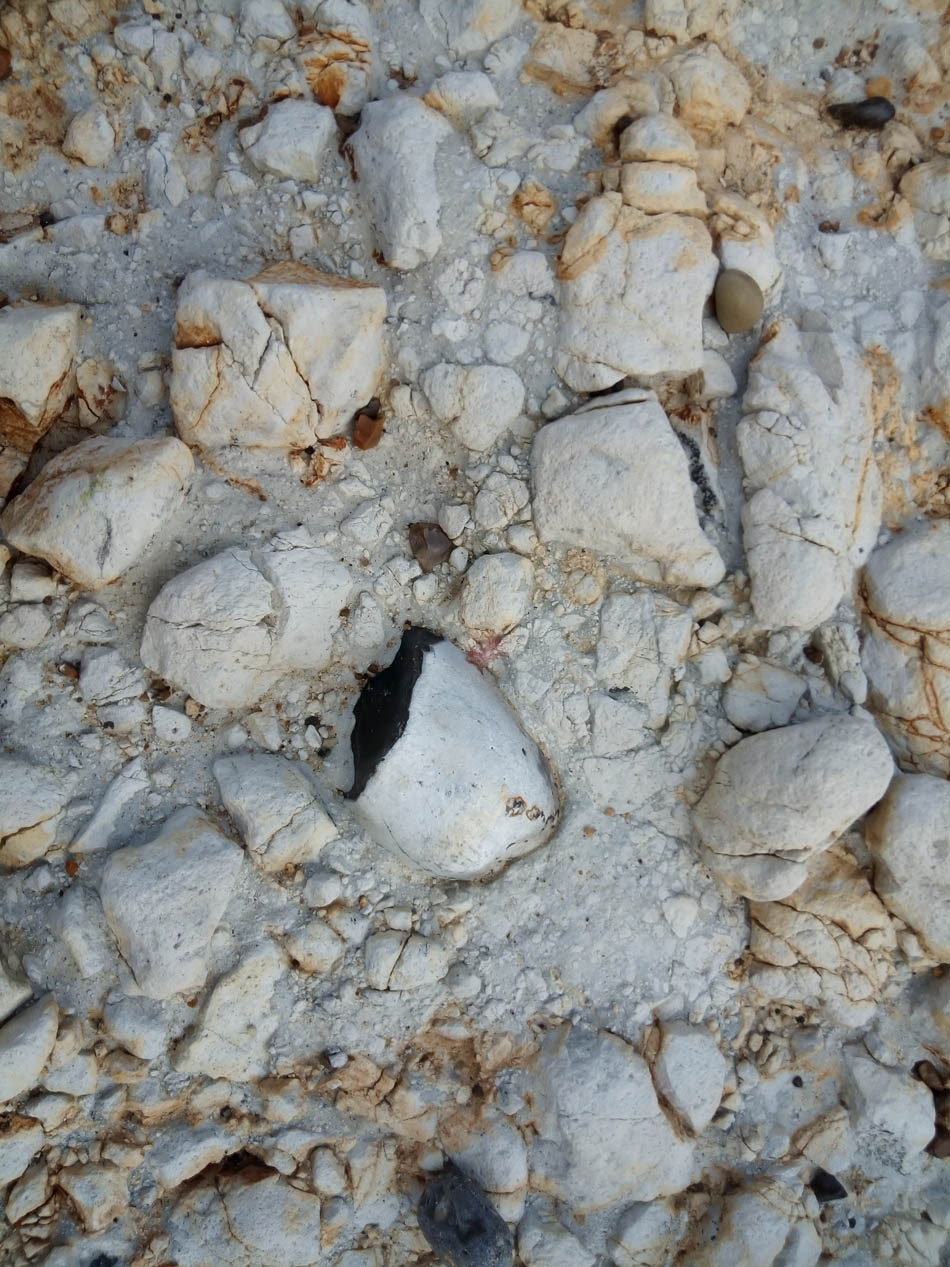The Cretaceous World
The world was a very different place in Cretaceous times (145.5 - 65.5 Ma). A greenhouse effect due to high levels of carbon dioxide in the atmosphere raised climatic temperatures by up to 10 degrees Celsius higher than present. There were no polar ice caps and forests flourished at high latitudes. With no ice trapped on land there was more water in the ocean. In addition, sea-floor spreading at mid-ocean ridges was both extensive and active at this time. This raised sea levels even higher, so that for much of the Cretaceous period seas expanded onto continental areas and large carbonate platforms and sedimentary basins formed. Cretaceous limestones are widespread.
The arrangement of the continents was very different due to plate tectonics and continental drift. The Atlantic was only half as wide as it is today and a major ocean, the Tethys, ran broadly east-west in a region occupied now by North Africa, the Mediterranean Sea, the Alps, Middle East and the Himalayas. The part of the Earth's crust now occupied by Britain was several degrees further south and enjoyed a sub-tropical climate. Much of it was submerged below an epicontinental sea, and our mountain regions were islands. The white carbonate mud that was laid down in late Cretaceous times we know today as the Chalk. It was formerly much more extensive but has been removed by denudation. Today its outcrop extends in a band across southern and eastern Britain, from East Yorkshire to Dorset and eastwards to Kent. Small outliers remain in Antrim and the Hebrides. Chalk forms the solid geology below much of the county of Norfolk and stretches beyond the coast into the southern North Sea basin.
